Metcalfe Garden Recovery: Fix Beetle Damage This Summer
Need help getting your garden back in shape after beetle damage? Request a free quote today!
Request Your Free QuoteQuick Summary: Beetle Recovery
- Identify the specific pests causing damage (beetles, grubs, rabbits, etc.).
- Assess the extent of damage to lawns, shrubs, flowers, and vegetables.
- Provide recovery care: deep watering, gentle fertilization, and targeted pruning.
- Implement eco-friendly, long-term controls: resistant plants, garden cleanup, physical removal, beneficial insects (nematodes).
- Plan ahead with fall cleanup and spring preparation to minimize future infestations.
Uh Oh, Beetles! Recovering Your Metcalfe Garden This Summer
Okay, Metcalfe neighbours, let's talk. You step outside, coffee in hand, ready to admire your lovely garden oasis, and... *sigh*. It looks like someone invited a hoard of tiny, six-legged party crashers who decided your beautiful perennials or lush vegetable patch were the all-you-can-eat buffet. If your prized plants are looking a bit ragged, hole-punched, or just plain sad, you're definitely not alone. Those pesky beetles have been making nuisances of themselves across the Ottawa area this summer, showing up uninvited in gardens from here in Metcalfe clear over to Greely and beyond.
It’s frustrating, we get it! You pour your time, sweat, and maybe a few choice words into creating your perfect outdoor space and nurturing your plants. Seeing beetle damage can feel like a real setback to your landscaping dreams. But don't hang up your gardening gloves just yet! This section is your friendly, practical guide to staging a summer comeback. We'll help you understand *which* little munchers might be causing the trouble and, more importantly, provide actionable advice and smart recovery strategies to help your beloved Metcalfe garden bounce back strong before the season ends. Let’s get things looking green and gorgeous again!
Who Chewed My Petunias? Identifying Ottawa's Garden Gangsters
Okay, fellow Ottawa gardeners, let's play detective. You step out into your yard, perhaps in Barrhaven or enjoying the green spaces near Nepean, ready to admire your beautiful petunias, hostas, or maybe your vegetable patch. But wait... *gasp*! Something has been munching where it shouldn't. Leaves are shredded, stems are snipped, and your floral pride and joy looks like it went twelve rounds with a tiny, hungry monster. So, who *are* these garden gangsters turning your landscaping efforts into a snack bar? Identifying the culprit is the first step to reclaiming your turf.
Let's look at the evidence left behind by some of Ottawa's most common leafy-green bandits:
- The Clean Cut Bandit (Rabbits): See stems snipped off cleanly, almost like tiny scissors did it, usually low to the ground? Are tender new shoots or leafy greens disappearing overnight? You might have a visit from Peter Rabbit's relatives. They love young plants and often leave small, round droppings nearby as a calling card. They're common everywhere, from rural properties like those near Marionville to city gardens.
- The Ragged Tear Marauder (Deer): If the damage is higher up (say, knee-to-waist height) and the leaves or stems look torn and ragged rather than neatly cut, suspect deer. They lack upper front teeth, so they grab and tear. You might also spot hoof prints in soft soil. While less common in dense urban areas, they frequently wander into yards bordering fields or wooded areas. Dealing with deer damage often involves exclusion methods, but keeping your yard tidy can make it less attractive. Don't forget that a thorough cleanup is essential before winter; check out how to Get Your Metcalfe Yard Ready with Fall Cleanup Services to reduce hiding spots.
- The Slimy Trail Terror (Slugs & Snails): Discovering irregular holes chewed in leaves, especially tender ones like hostas, often accompanied by a tell-tale slimy trail? Blame slugs or snails. These critters are most active at night or during damp, overcast days, turning leaves into lace. Keeping garden edges clear can help, a process similar to the techniques discussed for Tips for Metcalfe Spring Garden Border Recovery.
- The Midnight Nibbler (Earwigs): Finding ragged edges and small holes chewed into flower petals (yes, like your petunias!) and soft leaves, but can't spot the villain? Earwigs could be the cause. They often feed at night and hide in dark, damp places during the day – under pots, debris, or even thick layers of mulch. While mulch is great, applying it correctly is key; learn more with these Expert Mulch Installation Tips for Metcalfe Gardens.
- The Underground Underminer (Voles & Mice): Sometimes the damage isn't obvious chewing on leaves, but plants suddenly wilt or keel over. Check the base – gnaw marks near the soil line or tunnels in the garden bed point towards voles (meadow mice). They can nibble roots and stems, especially under the cover of snow or thick mulch. As the seasons change, remember vulnerable plants might need extra help; find ways to Protect Your Plants from Early Frost in Metcalfe.
Identifying your specific garden gangster helps you choose the right defense strategy, whether it's fencing, traps, repellents, or simply adjusting your garden maintenance. If tackling these pests or managing the aftermath feels overwhelming, remember that professional help is available. You can explore our Comprehensive Landscaping and Yard Care Services for year-round support. Don't let the munchers get you down – knowledge is power in the garden!
Damage Report: How Bad is the Beetle Buffet in Your Yard?
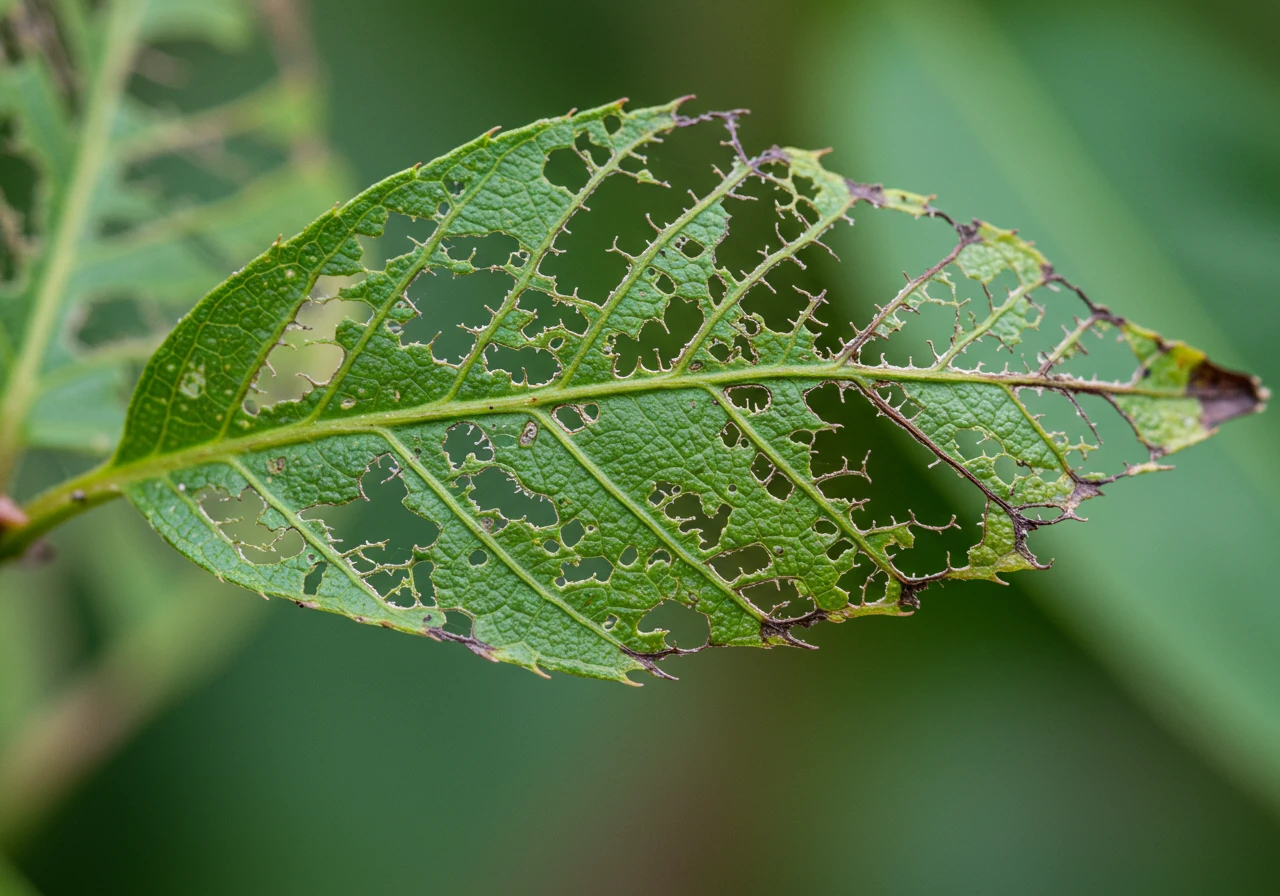
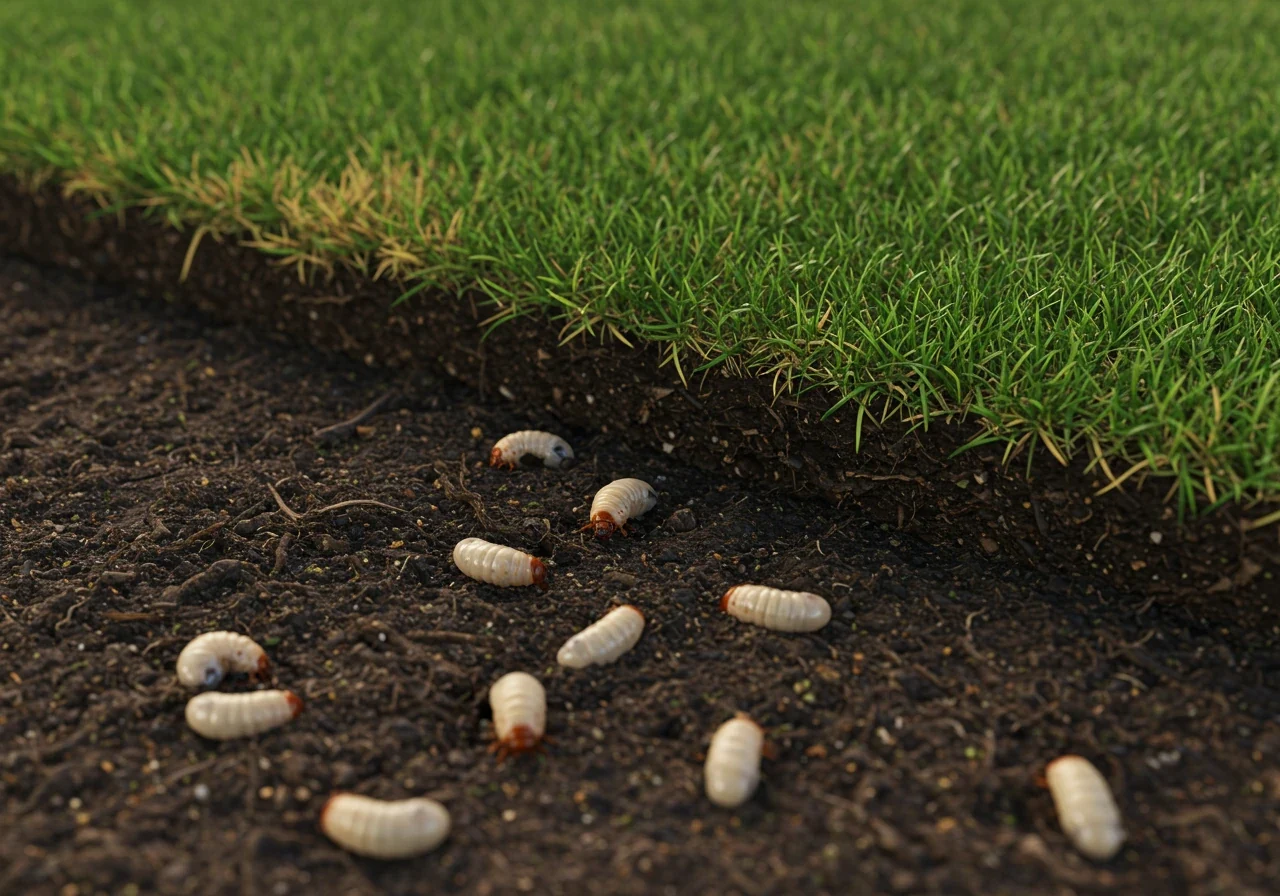
Alright, let's put on our detective hats – maybe grab a magnifying glass for dramatic effect – and assess the aftermath of the great beetle feast in your yard. Seeing chewed leaves and struggling plants can be disheartening, whether you're in leafy Nepean or tending a garden patch elsewhere in Ottawa. But figuring out *how bad* the damage really is helps decide the next steps. Time for a little garden CSI!
First, let's talk turf. Are you seeing weird brown patches on your lawn that don't seem related to drought? Does the grass feel spongy underfoot? Gently pull up a small section of the affected sod. If it rolls back like a cheap carpet and you see little C-shaped critters (grubs, the larval stage of beetles like June bugs or Japanese beetles), you've found the lawn party crashers. Grub damage often peaks in late summer/early fall. Improving lawn health is key; sometimes it starts beneath the surface with proper Soil Preparation for Healthier Ottawa Lawns. Healthy soil means tougher grass!
Next, check your shrubs and trees. Look closely at the leaves. Are they "skeletonized" – meaning only the veins are left behind, like delicate lace? Japanese beetles are notorious for this. Other beetles might chew distinct holes or cause leaves to yellow and drop prematurely. Walk around the entire plant. Is the damage concentrated, or widespread? A few nibbled leaves are usually just cosmetic, but heavy feeding can stress the plant, especially younger ones. Keeping the area around your shrubs tidy makes spotting these issues easier; it's a principle we apply even with our large-scale Comprehensive Marionville Property Cleanup Service – clear spaces reveal hidden problems.
Now, onto the flowers and veggies – the *real* delicacies for some beetles! Check blooms for chewed petals and leaves for holes or ragged edges. Some plants, like roses or beans, are beetle favourites, while others might be ignored. How much of the plant is affected? A plant that loses more than 30-40% of its leaves might struggle to photosynthesize properly, especially during Ottawa's hot summer days. Remember, well-watered and healthy plants can often withstand minor attacks better than stressed ones. Sometimes, a good tidying up is the first step to recovery, similar to what our Quick City Garden Clean Up Service tackles in urban spaces like Barrhaven.
Common Ottawa Garden Beetles & Damage Signs
| Beetle Type | Primary Damage Area | Damage Appearance | Common Targets |
|---|---|---|---|
| Japanese Beetle | Leaves, Flowers, Fruit | Skeletonized leaves (lacy), chewed petals | Roses, Grapes, Beans, Linden Trees |
| June Bug (Adult) | Leaves (minor) | Irregular chewing, less severe | Various trees and shrubs |
| White Grubs (Larvae of June Bug/Japanese Beetle) | Lawn Roots | Brown, spongy patches; turf pulls up easily | Lawns (especially sunny areas) |
| Cucumber Beetle | Leaves, Flowers, Fruit | Chewed holes, scarred fruit, spreads wilt | Cucumbers, Melons, Squash |
| Lily Leaf Beetle | Leaves, Stems, Buds | Chewed holes, notches, complete defoliation | True Lilies (Lilium), Fritillaria |
So, what’s the verdict? Is it a minor skirmish or a full-blown beetle invasion? If the damage looks mostly cosmetic and the plants seem generally healthy, you might just need to monitor them. If plants are severely stressed, dropping lots of leaves, or the lawn damage is extensive, more action might be needed. Feeling overwhelmed by the assessment or the potential cleanup? Don't worry, that's what we're here for. Check out our range of Comprehensive Landscaping and Yard Care Services for professional help. Getting an expert eye can make a difference, and we always appreciate hearing about your experience; clear communication starts with the assessment, and you can let us know how we did via our Estimate and Service Feedback channel. Knowing the extent of the beetle buffet damage is your first step toward helping your garden recover its green glory!
Need professional help assessing beetle damage or restoring your garden? We offer expert solutions.
Get Professional Help With Your Garden RecoveryOperation Garden Rescue: Your Summer Beetle Recovery Toolkit
Okay, brave Ottawa gardeners, the beetle battle might have left a few scars on your beloved plants, but Operation Garden Rescue is officially underway! Whether you're tending gardens in Kars, enjoying the space in Vernon, or anywhere else dealing with the aftermath, it's time to roll up those sleeves and deploy the recovery toolkit. Don't worry, it's less about retaliation and more about TLC. Let's help your green buddies bounce back this summer!
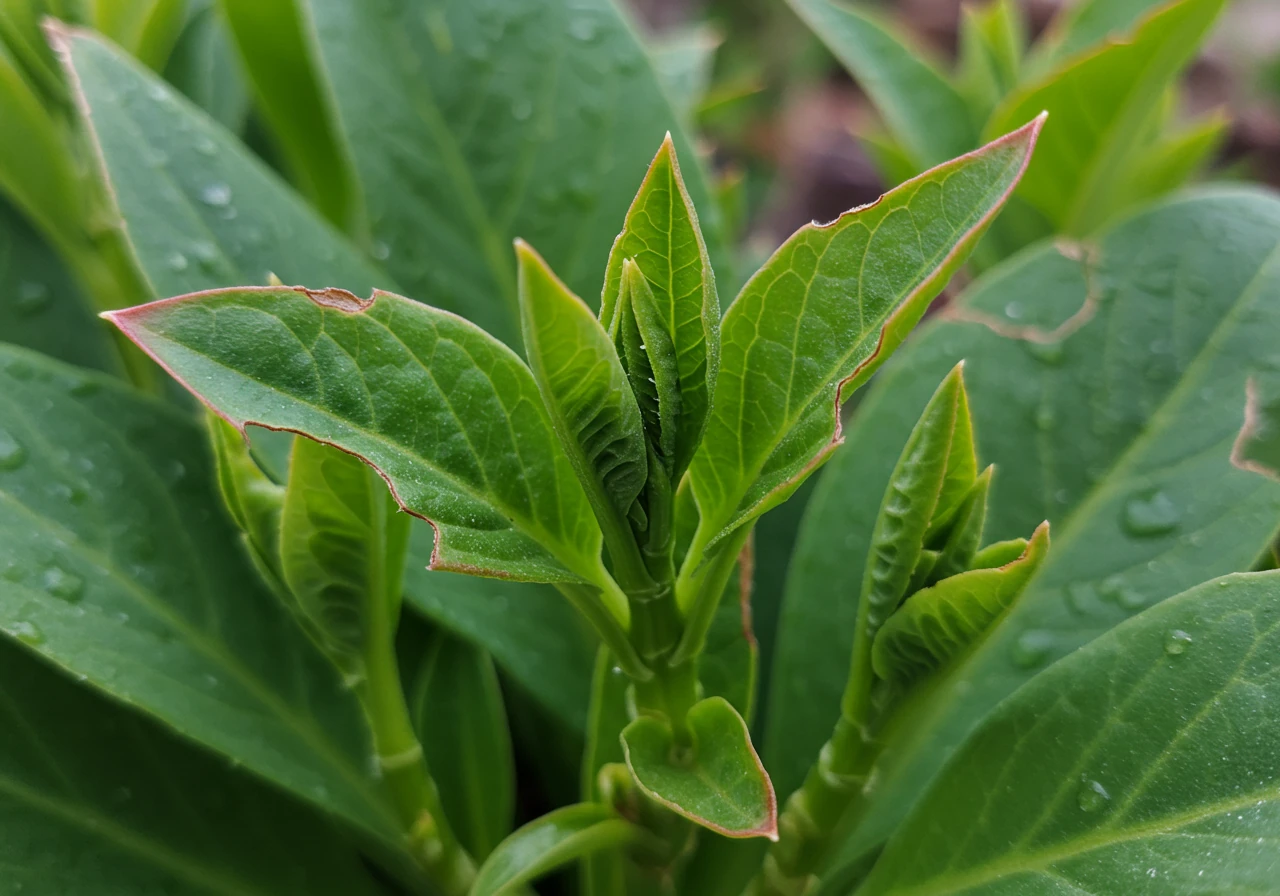
Here’s your step-by-step guide to beetle recovery:
Step 1: Hydration Station – Water Wisely
Think of your damaged plants like athletes after a tough game – they need serious hydration! Beetle damage stresses plants out, making them more vulnerable to heat and drought.
- Tip: Water deeply and consistently, especially during dry spells. Aim for early morning watering so leaves can dry before the hot sun hits, reducing fungal risks. Instead of a quick sprinkle, let the water soak down to the roots. Check the soil moisture an inch or two down; if it's dry, it's time to water.
- Avoid: Don't drown them! Soggy soil is just as bad as bone-dry soil. Good drainage is key.
Step 2: Feed Me Gently – Nutrient Nuances
While it's tempting to blast stressed plants with fertilizer, think gentle nourishment, not a five-course meal. Heavy feeding can actually stress damaged plants more.
- Tip: Opt for a balanced, slow-release fertilizer, or better yet, amend the soil with good quality compost or use a diluted compost tea. Improving overall soil health gives plants the foundation they need to recover. Choosing the right amendments is crucial; we talk more about sourcing quality products in our guide to Smart Landscaping Material Selection.
- Focus: Healthy soil = resilient plants!
Step 3: Pruning Power – Tidy Up Time
Snipping away the battle scars can actually help your plants recover faster and look better while doing it.
- Tip: Carefully prune away heavily damaged, skeletonized, or dead leaves and stems. This redirects the plant's energy towards producing healthy new growth rather than trying to sustain irreparable parts. It also improves air circulation.
- Caution: Don't go overboard! Removing *too much* foliage (more than a third) can shock the plant further. Focus only on the worst-affected bits. Need a hand getting the trimming just right? Our Regular City Garden Maintenance Service includes expert pruning.
Step 4: Lawn Love – Patching the Holes
If grubs turned your lawn into a patchwork quilt, recovery involves promoting new grass growth.
- Tip: Once the grub problem is under control (addressed separately, often in spring or fall), rake away the dead patches. Loosen the soil lightly and overseed with a suitable grass blend for Ottawa conditions. Keep the newly seeded areas consistently moist until the grass establishes. Maintain a healthy mowing height (usually around 3 inches) to encourage strong roots. You can learn more about lawn health at Ontario's Lawn Care Guide.
- Big Mess?: Sometimes grub damage is part of a larger yard issue needing attention. If you're facing a significant cleanup before repairs can even start, remember comprehensive help is available, similar to our specialized Comprehensive Metcalfe Property Cleanup Service designed for tackling bigger jobs. Even simple debris removal, like that offered by our Quick City Yard Clean Up Service, can make a big difference in assessing lawn damage.
Step 5: Patience & Observation
Plant recovery isn't instant. Give your garden time, continue providing good care, and keep an eye out for any new pest pressures or signs of stress. Your consistent effort is the secret weapon!
Feeling like Operation Garden Rescue needs reinforcements? If the recovery process seems daunting, don't hesitate to call in the pros. We're always happy to discuss your specific situation and provide an estimate. Let us know about your garden's needs and your experience via our Estimate and Service Feedback channel – clear communication helps us help you best! With a little care and patience, your garden *can* recover its summer sparkle.
Fighting Smarter, Not Harder: Eco-Friendly Beetle Control for the Long Haul
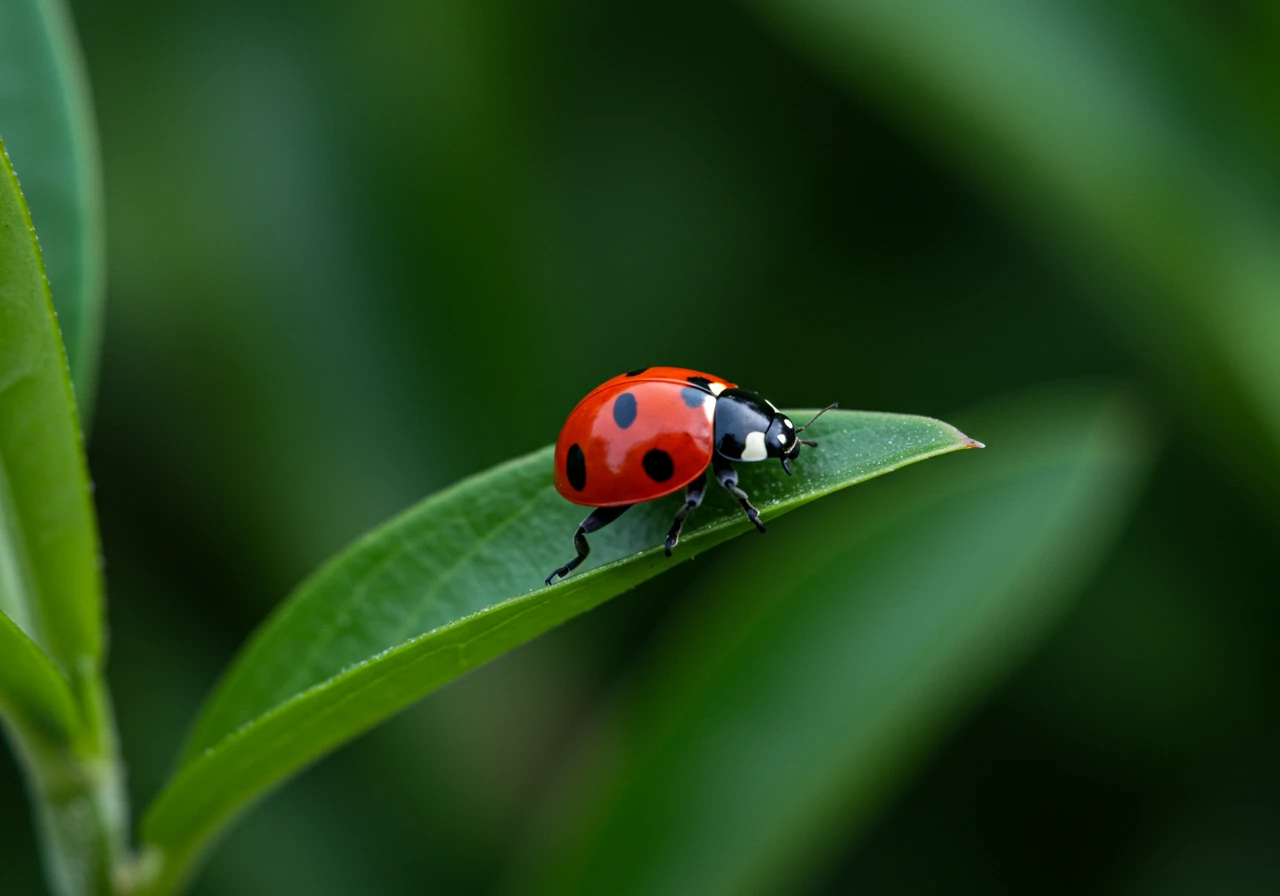
Okay, let's face it – playing whack-a-mole with beetles all summer gets old, fast. While immediate action might be needed sometimes (as we covered in Operation Garden Rescue), the real win comes from building a garden ecosystem that's less inviting to these persistent party crashers in the first place. This is about long-term strategy, creating a healthier environment in your Ottawa yard, whether you're in leafy Russell or out near Embrun, that naturally keeps beetle populations in check. It’s less about waging war, and more about creating balance.
Here’s how you can fight smarter, not harder, with eco-friendly approaches:
1. Make Your Garden Less Appetizing (Cultural Controls):
Think like a beetle: what makes your yard a five-star resort? Let's downgrade their stay.
- Plant Power: Some plants are basically beetle candy (roses, beans, grapes, lindens...). Others? Not so much. When adding new plants, do a little research on beetle-resistant varieties that thrive in our Ottawa climate. Smart plant choices from the start can save you headaches later. Considering resilience is key when doing your Smart Landscaping Material Selection.
- Clean Sweep: Beetles, especially their grub stage, love hiding out in messy spots – think thick layers of fallen leaves or garden debris left over winter. Keeping your garden beds and lawn tidy removes their shelters and potential egg-laying sites. This kind of regular upkeep is a fundamental part of effective Garden Maintenance. Even larger properties benefit; a thorough approach like our City Property Cleanup Service aims to reduce pest havens across the board.
- Rotate Your Veggies: If Japanese beetles are devouring your beans one year, try planting them in a different spot the next. Crop rotation can confuse soil-dwelling pests looking for their favourite meal ticket.
2. Get Hands-On (Physical Controls)
Sometimes, you just gotta get physical.
- The Soapy Swim: Head out early when beetles are slower, grab a bucket of soapy water, and knock 'em in. Simple, effective.
- Barrier Tactics: Use floating row covers early in the season for vulnerable plants like seedlings to physically block beetles.
- Traps - A Word of Caution: Japanese beetle traps catch beetles but often attract MORE from neighbours' yards. Use with caution and place FAR away from protected plants.
3. Recruit Nature's Hit Squad (Biological Controls)
Why do all the work yourself? Invite some natural predators.
- Encourage Good Bugs & Birds: Diverse plantings (native flowers/shrubs) provide habitat for beneficial insects (parasitic wasps) and birds that eat beetles/grubs. Avoid harsh chemicals!
- Nematode Ninjas: Fantastic long-term strategy for lawn grubs. Microscopic worms applied to soil hunt and kill grubs.
- Timing (Ottawa): Apply late Aug - mid-Sept when grubs are small & soil is warm (15°C+).
- Watering: Water well before & keep soil moist for ~2 weeks after application.
4. Gentler Sprays (Organic Options)
If you need a spray, choose wisely and carefully.
- Insecticidal Soap & Neem Oil: Less harsh than synthetics. Work on contact (soap smothers, neem disrupts feeding). Require direct contact and often reapplication.
- Read the Label!: ALWAYS follow instructions. Apply early morning or evening to minimize harm to pollinators like bees. Consider checking the Ottawa Horticultural Society for local advice.
Why Eco-Friendly Beats the Blitz:
Eco-friendly methods focus on creating a balanced garden ecosystem. They are generally targeted, meaning they don't wipe out the good bugs along with the bad. They build healthier soil, which means stronger, more resilient plants. It might require a bit more patience than a quick chemical fix, but the results are more sustainable and safer for kids, pets, and wildlife. Relying solely on broad-spectrum chemicals can sometimes lead to a rebound effect, as pest predators are also eliminated. When considering any professional service, it's wise to understand their approach and scope, just as you'd review our service guidelines outlined in the Terms and Conditions.
Building a beetle-resistant garden is an ongoing process, not a one-time fix. By layering these smarter, eco-friendly strategies, you'll be well on your way to enjoying your Ottawa garden more and stressing about beetles less. Taking these steps shows you're invested in the long-term health and beauty of your yard, and for that dedication, your garden (and we!) would definitely say Thank You!
Beetle Battle Plan: Prepping for Next Season in Winchester & Beyond
Okay, let's talk strategy! You've fought the good fight against the beetle brigade this season, maybe patched up some holes, and hopefully rescued your prized plants. But like any good general (or slightly frazzled gardener!), the best defense is a good offense planned *in advance*. Let's map out your Beetle Battle Plan for next season, ensuring your Winchester gardens, and those in neighbouring spots like Kenmore or Osgoode, are ready to stand strong. Think of this as your garden's boot camp!
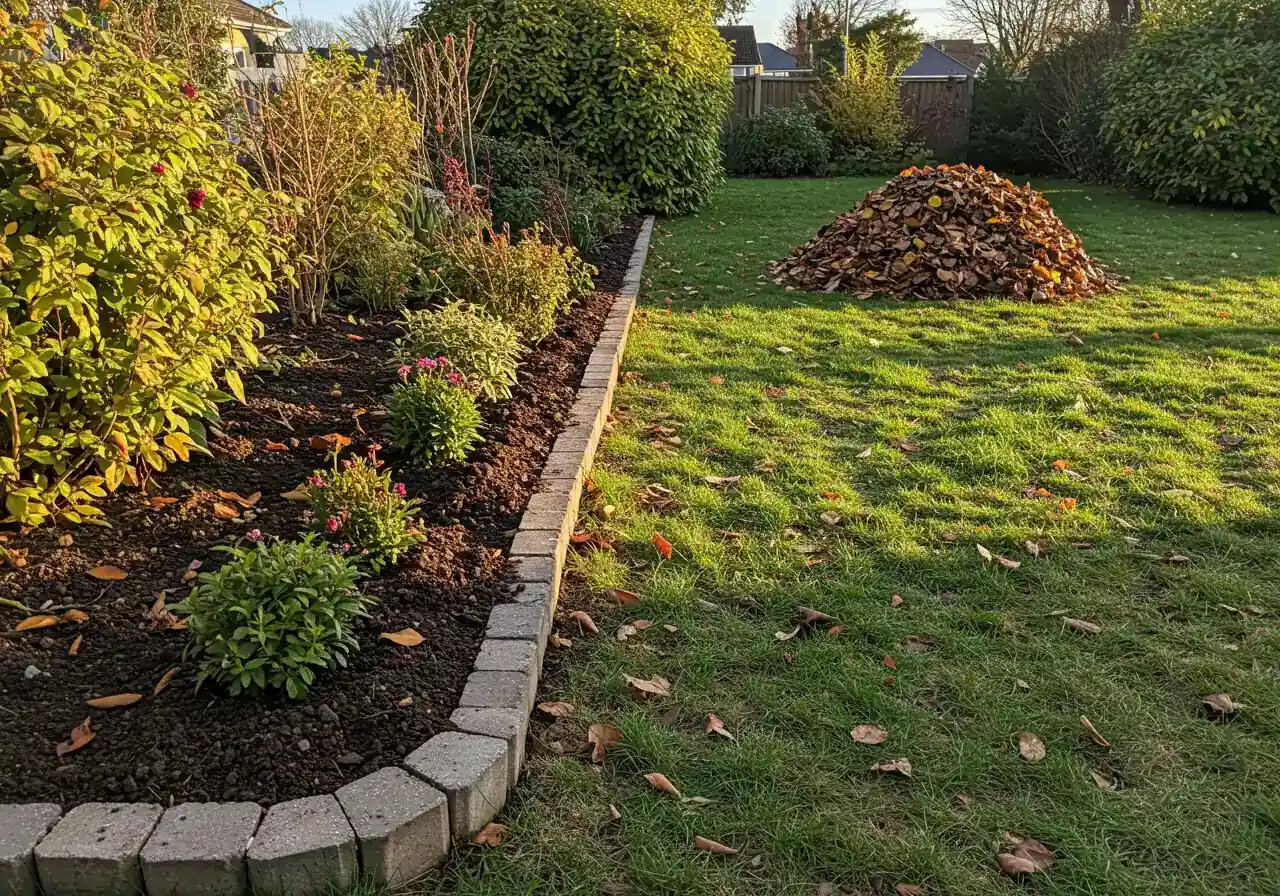
Fall Forward: Setting the Stage
Autumn is prime time for beetle prevention.
- The Great Garden Cleanup: Rake leaves, cut back spent perennials, remove debris to eliminate overwintering spots. Crucial for both small plots and larger properties needing services like Metcalfe Property Cleanup.
- Grub Warfare Round Two: Late Aug/Sept is often BEST time for nematodes to target grubs *before* winter. Essential for good Lawn Care.
- Soil TLC: Amend beds with compost/manure in fall for better soil structure and fertility.
Spring Into Action: Welcome Wagon (Not for Beetles!)
As the garden awakens, stay vigilant.
- Early Bird Inspection: Hand-pick the *first* beetles as plants leaf out to prevent population booms.
- Boost Your Beds: Top-dress with compost for a strong start.
- Smart Planting: Choose varieties less attractive to common beetles (Japanese, etc.). Research before planting!
Summer Strategy: Monitor & Maintain
Stay proactive through the growing season.
- Regular Checks: Continue monitoring plants for beetle activity, especially known favorites.
- Maintain Health: Keep plants properly watered and soil healthy to improve resilience.
- Targeted Action: Use hand-picking or eco-friendly controls promptly if needed.
Your Secret Weapon: A Simple Seasonal Calendar
Feeling overwhelmed? Create a super simple garden calendar. Just jot down reminders:
- Late August/September: Apply nematodes for grub control. Final garden tidy-up.
- October/November: Major fall cleanup (property clean up). Amend soil.
- April/May: Inspect emerging plants. Top-dress soil. Plant resistant varieties.
- June/July: Monitor for adult beetles. Hand-pick or use eco-friendly controls as needed.
This proactive approach, focusing on cleanup, soil health, and smart plant selection, is your best bet for minimizing beetle battles next year. It’s about creating a healthy, balanced garden ecosystem. We're passionate about helping Ottawa-area gardeners achieve this balance, and you can learn more about our philosophy and commitment by checking About Us. We believe in transparent practices, right down to how we handle information; feel free to review our Privacy Policy for details on data protection. Planning ahead really makes a difference, and for taking these steps towards a healthier garden next season, we just want to say Thank You! We've completed many successful garden transformations by following these principles.
Note: Chart is for illustrative purposes only. Actual recovery varies greatly based on plant type, conditions, and care.
Metcalfe Gardener's Cheat Sheet: Quick Beetle Recovery Tips
Alright, Metcalfe gardeners, those beetles threw a wild party, but cleanup and recovery don't have to be a nightmare! Here’s your super-quick cheat sheet to help your Ottawa garden bounce back *this summer*. We get it, you want results fast – learn a bit About Us and our commitment to helping local yards like yours thrive. Check out our Google My Business page for reviews! Now, let's get those plants perked up:
- Water Smart: Beetle-stressed plants are *thirsty*! Water deeply at the base, especially during dry spells, aiming for early mornings. Consistent moisture is key for recovery right now.
- Feed Gently: Skip harsh chemical fertilizers for now. Give recovering plants a gentle boost with compost or diluted compost tea to rebuild strength without adding more stress. Healthy soil supports recovery.
- Snip & Tidy: Carefully prune away the *most* heavily damaged or skeletonized leaves. This helps the plant focus energy on healthy new growth instead of doomed foliage. Clearing surrounding debris helps too; our Ottawa Yard Cleanup Service can tackle major tidying jobs if needed.
- Lawn SOS: For grub-damaged lawns, keep affected areas consistently watered to support any surviving grass. If the damage is extensive and looks beyond saving, exploring options like professional Expert Sod Installation Solutions can provide a quicker path to a lush green lawn.
- Ask for Backup: Feeling overwhelmed by the beetle buffet aftermath? Sometimes a helping hand makes all the difference. Don't hesitate to reach out for professional advice – you can easily Contact Us to discuss your garden's specific recovery needs.
Your Ottawa Beetle Questions Answered (FAQ)
While Japanese beetles get a lot of headlines (and munch a lot of leaves!), they aren't the only six-legged troublemakers around here. Keep an eye out for June bugs – their larvae, those C-shaped white grubs, can wreak havoc on lawns across Ottawa, including areas like Manotick. You might also encounter cucumber beetles feasting on your veggies, or lily leaf beetles turning your beautiful lilies into sad, holey messes. Identifying the specific beetle helps tailor your defence, but generally, keeping your garden tidy and soil healthy are good first steps. Sometimes, a serious infestation leaves behind a lot of plant debris; our dedicated garden clean up services (serving Ottawa, Metcalfe, and Marionville) can help clear the way for recovery.
That's smart thinking! While no plant is 100% beetle-proof, some are definitely like ringing the dinner bell. Japanese beetles, for instance, absolutely adore roses, grapes, linden trees, and Virginia creeper. If you've had bad beetle problems, you might want to steer clear of planting large numbers of these, especially near prime sunny lawn areas where grubs thrive. Consider alternatives like boxwood, hydrangeas, lilacs (though watch for lily leaf beetle if planting lilies nearby!), or most evergreens, which tend to be less appealing. When planning new garden installations, selecting resistant varieties from the start can save you a lot of hassle down the road.
Ah, the great trap debate! Here's the scoop: Yes, those traps *do* catch a lot of Japanese beetles, using floral scents and pheromones as bait. *However*, they often attract *more* beetles into the vicinity than were already there – including beetles from your neighbours' yards in places like Osgoode! So, while they *catch* beetles, they can inadvertently increase the overall population *in your garden area*. If you choose to use one, place it as far away as possible (like, 50 feet or more) from the plants you want to protect. Don't hang it right next to your prize-winning roses! Often, hand-picking and focusing on lawn health to reduce grubs are more effective long-term strategies.
Oh dear, grub damage is no fun! Unfortunately, just adding mulch to the lawn won't fix grub damage – mulch is for garden beds, not turf. Fixing a grub-damaged lawn usually involves a two-pronged approach: dealing with the grubs (often best done preventatively in late summer/early fall with nematodes) and repairing the turf. For damaged areas, rake away the dead grass, loosen the soil, and reseed or lay new sod. Keeping your lawn healthy with proper watering and fertilization makes it more resilient. While mulch isn't for lawns, ensuring your garden beds look sharp with professional mulching and edging can definitely improve your yard's overall appearance while you work on lawn recovery. Services like our Metcalfe yard cleanup can prep the area.
It's tempting to reach for the strong stuff when you feel overrun! However, Ontario (including Ottawa) has cosmetic pesticide regulations that restrict the use of many traditional chemical pesticides on lawns, vegetable gardens, and ornamental plants purely for aesthetic reasons. There are exceptions for health and safety (like wasps nests) or agriculture. This encourages using eco-friendly methods like hand-picking, introducing beneficial insects, using insecticidal soaps or horticultural oils, and focusing on prevention. Before using *any* product, read the label carefully and ensure it's permitted for your intended use. If the beetle aftermath requires a major cleanup before you can even assess plant health, consider a thorough property cleanup to reset the stage. Always prioritize the least toxic approach first!
Don't Let Beetles Bug You Out: Reclaim Your Metcalfe Oasis
Okay, Metcalfe neighbours, let's wrap this up! Those beetles might have tried their best to turn your beautiful garden into their personal snack bar, but hopefully, you're now feeling more empowered to stage a comeback. Remember, dealing with beetle damage is a multi-step dance: first, you *identify* the little munchers, then *assess* the damage (from lawn grubs to skeletonized leaves), provide some *TLC* for recovery (think smart watering, gentle feeding, and strategic pruning), and finally, plan for the *long haul* with eco-friendly controls and preventative steps like thorough fall cleanup.
It might seem like a lot, but reclaiming your Metcalfe oasis – or your green space anywhere from Manotick to Greely – is totally doable. Don't let those six-legged invaders bug you out permanently! Your garden *can* recover its charm and beauty with a little know-how and consistent care. Stay patient, stay positive, and remember that healthy landscaping practices are your best defense.
Ready for some hands-on help? If the beetle battle aftermath feels overwhelming or you want expert help with recovery and prevention, Contact Clean Yards today for personalized advice and professional service. Check out our landscaping services!
Looking to plan ahead or get a specific quote for garden cleanup, maintenance, or recovery?
Request Your Free Estimate Online
